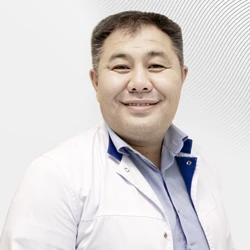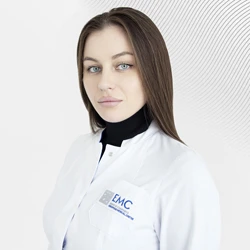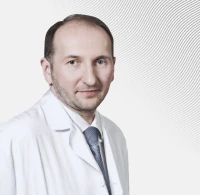Hydrocephalus
Author: neurosurgeon, PhD, member of the European Association of Neurosurgical Societies (EANS) Alexey Gaitan.
Hydrocephalus is a pathological condition characterized by excessive accumulation of fluid in the ventricles of the brain.
Description of hydrocephalus
This disease occurs among both adults and children of any age and is associated with a violation of one of the mechanisms of circulation of cerebrospinal fluid (CSF): impaired absorption or an increase in its production, which leads to increased intracranial pressure.
Hydrocephalus can be either an independent disease or occur as a complication associated with other pathological conditions of the body.
Types of dropsy of the brain
The main functional variants of hydrocephalus include:
-
obstructive hydrocephalus (so-called unreported): occurs when there is an obstacle to the flow of cerebrospinal fluid inside the ventricular system of the brain;
-
communicable hydrocephalus associated with a block of normal absorption of cerebrospinal fluid.
Special forms are also distinguished separately, for example, external hydrocephalus, which is characterized by an increase in the ventricles as a result of a decrease in the amount of brain matter (brain atrophy). This condition is not true hydrocephalus and occurs during normal aging. Due to Alzheimer's disease and other types of dementia, the process may be more pronounced.
Another type of hydrocephalus is called normotensive hydrocephalus, or normal pressure hydrocephalus (HD). It is distinguished by the classic triad of symptoms (dementia, gait disorders, urinary incontinence), as well as normal pressure during lumbar puncture. After bypass surgery, the condition improves.
Isolated IV ventricle is a type of hydrocephalus that occurs when there is no communication with the III ventricle (through the Sylvian aqueduct) and with the basal cisterns (through the holes of the Hatch and Majandi).
"Stopped" or compensated hydrocephalus is a condition characterized by the absence of progression or harmful effects of hydrocephalus that would require the installation of a shunt. With this type of hydrocephalus, help is required only if symptoms of intracranial hypertension occur: headache, vomiting, impaired coordination of movements of various muscle groups, or visual disturbances.
According to the rate of flow, the following are distinguished:
Acute hydrocephalus, when no more than 3 days pass from the moment of the first symptoms of the disease to severe decompensation.
Subacute progressive hydrocephalus, within a month of the onset of the disease.
Chronic hydrocephalus, which develops over a period of 3 weeks to 6 months or more.
By origin, hydrocephalus is divided into congenital and acquired. In adults, the development of the acquired form is most often detected.
Causes of hydrocephalus in adults
Causes of hydrocephalus in adulthood:
-
CNS infections (meningitis, cysticercosis)
-
hemorrhages (subarachnoid hemorrhages, intraventricular hemorrhages), in many cases temporary HCF occurs. In 20-50% of cases of extensive HCV, persistent HCF develops
-
volumetric brain formations (non-cancerous, for example, vascular malformations and brain tumors). Types of tumors that can block the cerebrospinal fluid pathways: medulloblastoma, colloidal cysts, pituitary tumors.
-
hydrocephalus after surgery
-
neurosarcoidosis
-
"constitutional ventriculomegaly": asymptomatic, does not require treatment
-
spinal tumors.
Symptoms of hydrocephalus in adults
The classic symptoms of hydrocephalus are symptoms of increased intracranial pressure:
-
edema of the optic disc;
-
headache;
-
nausea and/or vomiting;
-
gait disorders;
-
oculomotor disorders (upward gaze paresis and/or abducens nerve paresis).
There may also be symptoms of axial dislocation of the brain, which is a dangerous clinical condition and requires emergency medical care. At the same time, slowly enlarging ventricles may not cause symptoms at first.
Instrumental diagnosis of hydrocephalus
In most cases, the most informative studies on the basis of which doctors can diagnose hydrocephalus are computed tomography (CT) or magnetic resonance imaging (MRI)the brain. In some cases, a Tap test may be performed to determine the feasibility of bypass surgery in a patient with suspected hydrocephalus (of a non-obstructive nature). The test involves the removal of 30 ml of cerebrospinal fluid through a lumbar puncture, after which a re-assessment of the patient's cognitive functions is performed. Its improvement signals a high probability of the effectiveness of subsequent cerebrospinal bypass surgery.
Causes of brain hydrocephalus in children
Very often, parents of young children with a diagnosis of hydrocephalus turn to doctors. External hydrocephalus (dropsy of the brain) is quite common among children, especially those born prematurely. In most cases, these children have normal psychomotor development, and often by the age of two, the size of the skull returns to normal. The cause of this type of hydrocephalus in children may be immaturity of the brain structures, hemorrhages, and some other causes.
Internal hydrocephalus in young children can be congenital and is associated with the effects of pathological factors on the embryo and fetus. Such factors include various toxins, infections, medications, and abnormal brain structures in the embryo.
Internal acquired hydrocephalus is also found in children. The cause of acquired hydrocephalus in newborns is most often intraventricular hemorrhages that occur during childbirth. Acquired hydrocephalus can also occur due to brain injuries, infectious and parasitic diseases, neoplasms, etc.
Symptoms of cerebral dropsy in children
Symptoms of cerebral dropsy in children may appear at a very early age. With severe dropsy, the pathological symptoms increase rapidly. With moderate dropsy, the symptoms are not so noticeable.
The main symptoms in young children:
-
delayed physical and neuropsychiatric development
-
lethargy, irritability
-
decreased motor activity
-
does not know how to hold his head well
-
frequent regurgitation after eating
-
an increase in head circumference due to the divergence of the cranial bones of the cerebral region
-
swelling and non-regrowth of fontanelles
-
expansion of the venous vessel network on the head
-
the overhang of the cerebral skull over the facial one, while the face appears very small
-
deformity of the orbits, which causes the eyeballs to turn downwards.
In older children, fontanelles do not bulge, and other symptoms predominate. Basically, it is a headache that is intense, more often in the morning, vomiting, which does not bring relief. During the examination, specialists may detect stagnation on the retina, in particular, venous fullness, swelling. Over time, vision may deteriorate due to the progression of optic nerve atrophy.
Complications of hydrocephalus
Untimely or erroneous diagnosis and treatment of patients with hydrocephalus can lead to the development of severe consequences that can lead to severe disability of the patient, such as: oculomotor and visual impairments (up to blindness), a violation of the shape and size of the skull, delayed intellectual / physical development,. In addition, in some cases, a dangerous complication of hydrocephalus can be a displacement of brain structures and an insertion of the brain, which leads to the rapid death of the patient.
The importance of an examination by a specialist
Considering the serious complications this disease can lead to, it is very important that the child be under the supervision of competent specialists from birth. First of all, a pediatrician, who, at the slightest suspicion of hydrocephalus, will prescribe the correct examination and refer you to the right specialists, first of all, to a neurosurgeon, who will prescribe a targeted diagnosis and select a competent treatment, individually selected for the patient, depending on the type and cause of hydrocephalus.
As for adults, it is worth highlighting the elderly with symptoms of dementia, gait disorders, which are often attributed to age. They also need to be examined by competent specialists, primarily neurologists and neurosurgeons, who can use diagnostic tests (TAP-test) and instrumental examination (MRI with assessment of cerebrospinal fluid circulation, CT scan of the brain) to differentiate hydrocephalus from other causes of dementia. In the presence of hydrocephalus, which is most often normotensive in this situation, specialists can choose a treatment that will significantly alleviate the situation.
Hydrocephalus treatment
Treatment of hydrocephalus begins with finding out its causes. The main efforts are aimed at reducing intracranial pressure and improving the patient's condition.
The choice of treatment method is individual and depends on the patient's age, severity of symptoms, and concomitant diseases.
Surgery is the main method of treating hydrocephalus. Diuretic therapy, such as Acetazolamide (Diacarb), can be performed in premature infants, and only if there is no acute hydrocephalus. However, most often this method complements the main treatment. When using diuretics, it is important to monitor the patient's electrolyte balance.
Lumbar punctures in hydrocephalus are performed not only for diagnostic purposes. For example, in cases of hydrocephalus after intraventricular hemorrhages, repeated punctures can be a temporary treatment method, and sometimes they can reduce hydrocephalus until cerebrospinal fluid circulation is restored. But it is important to remember that lumbar punctures can only be performed with communicating hydrocephalus. If cerebrospinal fluid circulation has not been restored after normalization of the biochemical composition of cerebrospinal fluid, primarily protein, it is unlikely that it will recover (i.e. it will be necessary to install a shunt).
Surgical treatment. It is important to understand that the normal size of the ventricles is not the goal of surgery. The goal of treatment is optimal neurological functions and a good cosmetic result.
If we are talking about obstruction of the cerebrospinal fluid pathways by a tumor, hematoma, cyst, etc., then eliminating the causes of the obstruction is quite effective. In the absence of such reasons, various types of surgical treatment can be used, depending on the clinical situation.:
-
Installation of bypass systems. Currently, the most commonly used ventriculo-peritoneal shunt is when cerebrospinal fluid is removed from the ventricles of the brain using a connected system of catheters and a valve into the abdominal cavity. Sometimes a ventriculo-atrial "vascular shunt" is used, when cerebrospinal fluid is discharged from the ventricles of the brain through blood vessels into the right atrium. This method can be used if there are contraindications to abdominal surgery. Modern bypass systems currently used in practice are MRI-compatible, as well as adjustable, which allows you to adjust the pressure individually for each patient.
-
Endoscopic ventriculostomy of the III ventricle. The method can be used for occlusive hydrocephalus, for dormant ventricular syndrome, as well as as a treatment option for infection of the bypass system. This type of surgery can also be used in cases where hematomas occur after the installation of the shunt (the shunt is removed before the ventriculostomy).
The Neurosurgery Clinic of the European Medical Center has facilities for the diagnosis and surgical treatment of hydrocephalus according to modern international standards. The operations are performed by highly qualified specialists with extensive practical experience.
Why the EMC
The first and only clinic in Russia, created in the image of the world's leading clinics
EMC is a multidisciplinary center offering patients a high level of medical services and a personalized approach
Worldwide recognition and awards
 Learn more
Learn more
Worldwide recognition and awards
 Certificates and licenses
Certificates and licenses
Make an appointment for a consultation
Specify your contacts and we will contact you to clarify the details
Reviews
and new products of the EMC


.webp)









